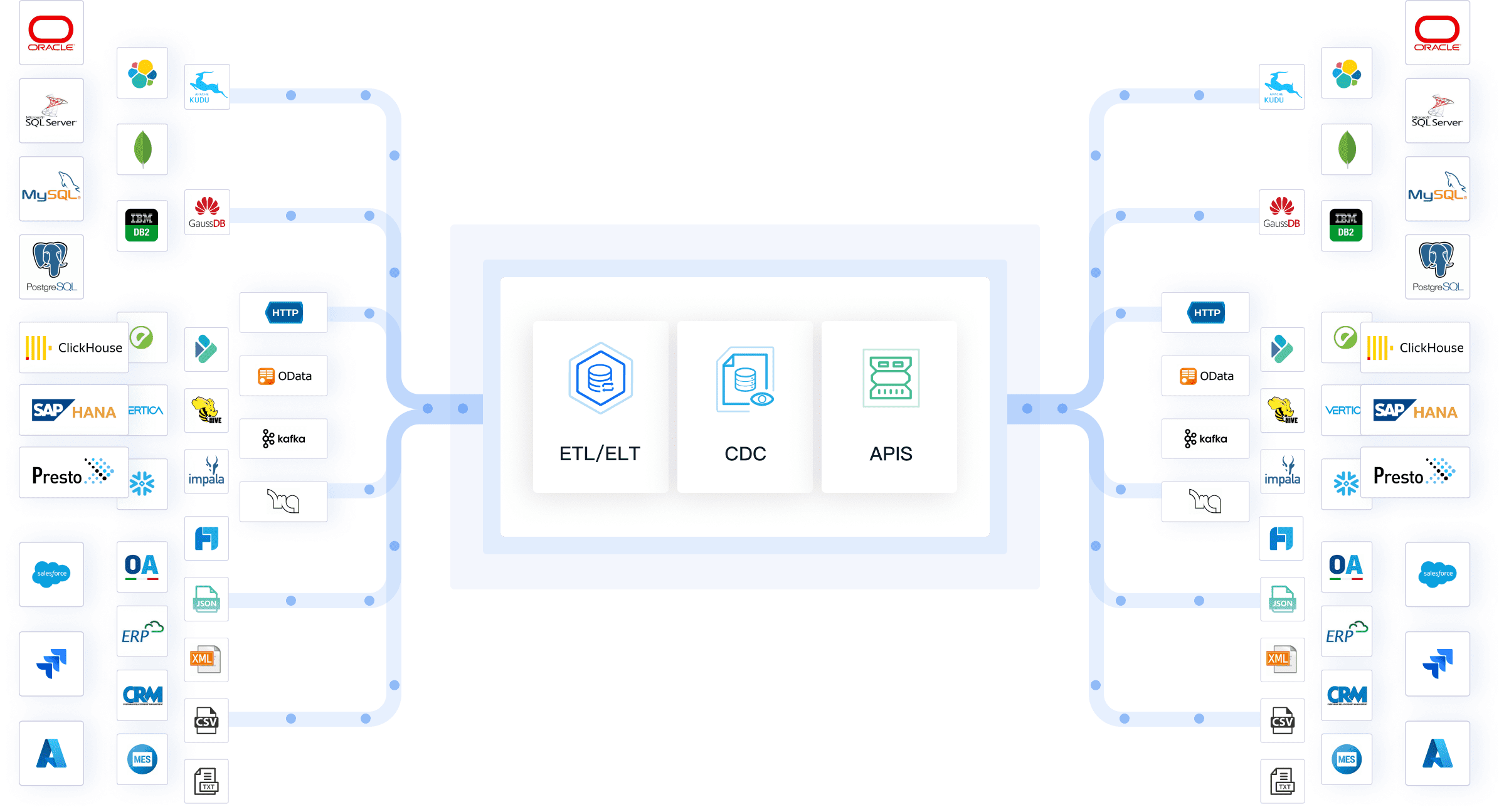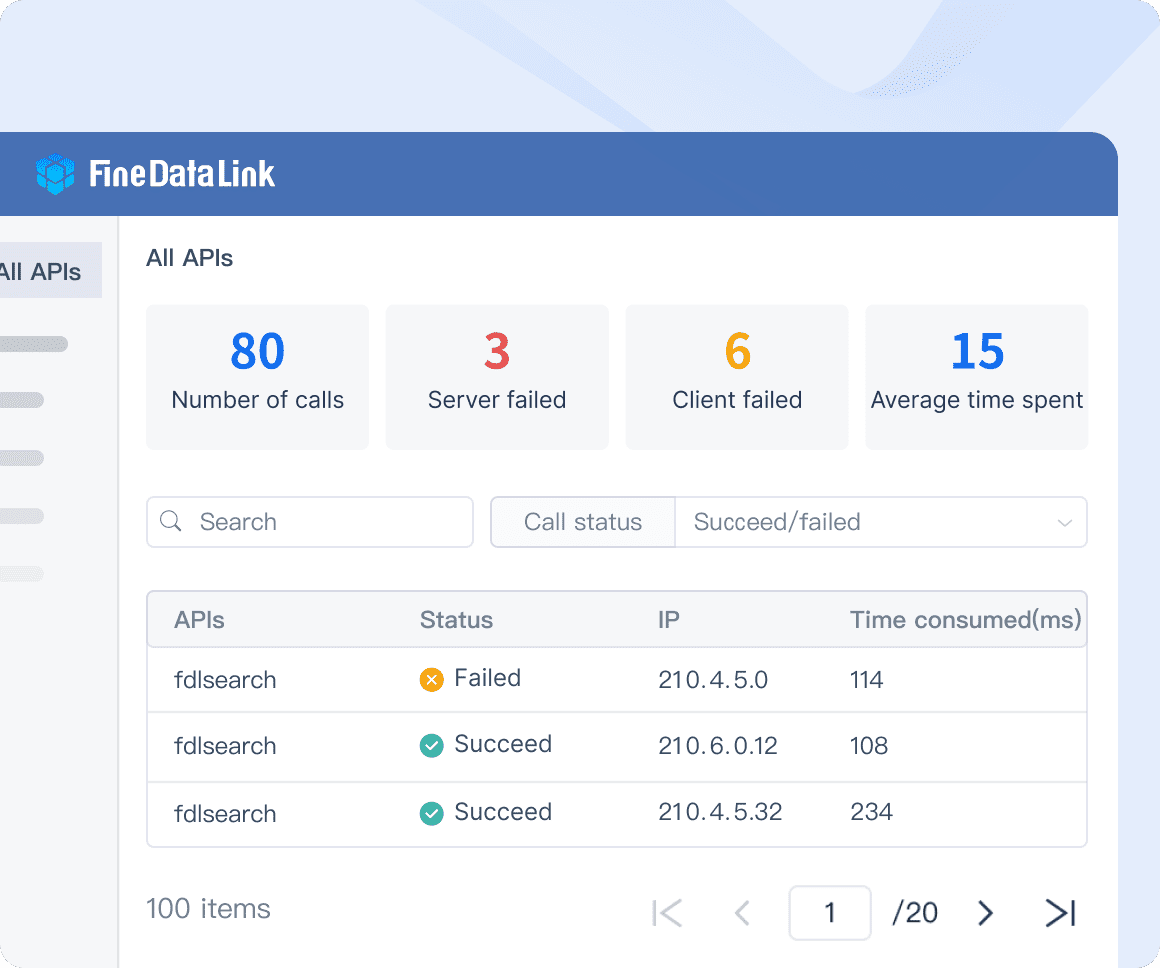Customer data integration involves collecting and organizing customer data for easy sharing across an organization. This process combines data from various databases into a single, accessible form. Customer data integration creates a unified view of customer interactions. FineDataLink offers a robust platform for this integration. FineDataLink enables real-time synchronization and transformation of data. Businesses gain a comprehensive understanding of customers through effective data integration. FineDataLink addresses challenges like data silos and complex formats. Organizations benefit from improved decision-making and customer insights.
Understanding Customer Data Integration
What is Customer Data Integration?
Customer data integration involves the process of collecting, organizing, and consolidating customer information from various sources. This integration ensures that businesses have a unified view of customer interactions. The key components of data integration include data collection, transformation, and synchronization. FineDataLink provides a robust platform for achieving seamless customer data integration. FineDataLink enables organizations to integrate data across diverse systems efficiently.


Why is Customer Data Integration Important?
Customer data integration offers numerous benefits to businesses. Organizations gain a comprehensive understanding of their customers by integrating data from multiple sources. This integration enhances decision-making processes and improves customer insights. FineDataLink addresses common challenges such as data silos and complex data formats. Businesses can streamline operations and optimize performance through effective data integration. FineDataLink's real-time data synchronization capabilities ensure that organizations maintain accurate and up-to-date customer information.

Types of Customer Data Integration
Data Consolidation
Explanation and examples
Data consolidation involves merging data from multiple sources into a single, unified repository. This process ensures that businesses have a comprehensive view of customer interactions. Data consolidation eliminates redundancies and improves data quality. For instance, a retail company might consolidate customer data from online and in-store purchases. FineDataLink offers a robust platform for data consolidation. FineDataLink enables seamless integration and transformation of data across various systems.
Use cases in different industries
Data consolidation finds applications in several industries. In the healthcare sector, hospitals consolidate patient records from different departments. This practice enhances patient care and streamlines operations. Financial institutions consolidate customer transaction data for better risk assessment. FineDataLink provides solutions for efficient data consolidation in these industries. FineDataLink addresses challenges like data silos and complex data formats.
Data Federation
Explanation and examples
Data federation allows access to data from multiple sources without physically moving it. This approach provides a virtual view of data, enabling real-time access and analysis. Businesses can query data from different databases as if it resides in a single location. An example includes a multinational corporation accessing sales data from various regional offices. FineDataLink supports data federation through its advanced integration capabilities. FineDataLink ensures seamless data access and synchronization.
Use cases in different industries
Data federation proves beneficial in industries like telecommunications. Companies access customer data from different regions for targeted marketing campaigns. In the education sector, universities use data federation to access student records from various campuses. FineDataLink facilitates data federation in these scenarios. FineDataLink's real-time data synchronization ensures accurate and up-to-date information.
Data Propagation
Explanation and examples
Data propagation involves distributing data across multiple systems or locations. This method ensures consistency and availability of data throughout an organization. Businesses use data propagation to update customer information across different platforms. For example, a bank updates customer contact details across its branches. FineDataLink excels in data propagation with its real-time synchronization features. FineDataLink enables efficient data distribution and management.
Use cases in different industries
Data propagation is essential in sectors like logistics. Companies propagate shipment data across warehouses and distribution centers. This practice ensures timely delivery and inventory management. In the retail industry, businesses propagate product information across online and offline channels. FineDataLink offers solutions for effective data propagation in these industries. FineDataLink addresses scalability and performance challenges during data integration tasks.
Tools and Technologies for Customer Data Integration
Popular Customer Data Integration Tools
Overview of leading tools
Data integration platforms streamline the process of integrating data from various sources. These platforms provide a comprehensive suite of products designed to simplify data integration. FineDataLink stands out as a modern and scalable solution. FineDataLink addresses challenges related to data silos and complex data formats. FineDataLink offers real-time synchronization, ETL/ELT capabilities, and API development. FineDataLink enables seamless integration and transformation of data across diverse systems.

ETL tools focus on extracting, transforming, and loading data into target systems. These tools automate the ETL process, reducing manual effort and errors. FineDataLink serves as an effective ETL tool for building data warehouses. FineDataLink supports real-time data synchronization with minimal latency.
Features and functionalities
Data integration platforms offer a range of features to enhance data management. Key features include real-time data synchronization and automation of workflows. FineDataLink provides a visual and user-friendly interface for easy deployment. FineDataLink supports over 100 connectivity options for diverse data sources. FineDataLink enables efficient data preprocessing and serves as an ETL tool. FineDataLink allows API development without coding, facilitating data sharing.
Emerging Customer Data Integration Technologies
AI and machine learning in data integration
Artificial intelligence (AI) and machine learning (ML) transform data integration processes. These technologies enhance data quality and accuracy through automated learning. AI algorithms identify patterns and anomalies in data, improving decision-making. Machine learning models predict trends and customer behaviors based on integrated data. FineDataLink incorporates AI and ML to optimize data integration tasks. FineDataLink ensures high-quality data for business intelligence applications.
Cloud-based solutions
Cloud-based solutions revolutionize customer data integration by offering scalability. These solutions provide flexible storage and processing capabilities for large datasets. Businesses access data from anywhere, enabling remote collaboration and analysis. FineDataLink leverages cloud technology to deliver scalable integration services. FineDataLink supports real-time data updates across multiple systems and applications. FineDataLink addresses performance challenges during data integration tasks.
Challenges in Customer Data Integration
Common Challenges
Data quality issues
Organizations often face challenges with data quality when integrating customer information. Data from various sources may contain inconsistencies and inaccuracies. These issues can arise due to errors in data entry or outdated information. Poor data quality affects decision-making and customer insights. FineDataLink provides solutions to enhance data quality through real-time synchronization. This platform ensures accurate and up-to-date customer data for businesses.
Integration complexity
FineDataLink addresses integration complexity with its ETL/ELT capabilities. The platform simplifies data transformation and mapping across various systems.
Overcoming Challenges
Strategies for effective integration
Effective data integration requires strategic planning and execution. Organizations should define clear objectives and goals for data integration projects. Identifying key data sources and understanding their structures is essential. Businesses must prioritize data quality and consistency throughout the integration process. FineDataLink offers a modern and scalable solution for effective data integration. The platform supports real-time data synchronization and transformation.
Best practices
Organizations should follow best practices to achieve successful data integration. Establishing a robust data governance framework ensures data accuracy and compliance. Regular monitoring and evaluation of data integration processes help maintain quality. Automation of workflows reduces manual intervention and errors. FineDataLink provides tools to automate data integration tasks efficiently. The platform's user-friendly interface facilitates easy deployment and management.
Best Practices for Successful Customer Data Integration
Planning and Strategy
Importance of a clear strategy
A clear strategy is vital for successful customer data integration. Organizations must define specific goals for data integration projects. A well-defined strategy ensures alignment with business objectives. FineDataLink assists in creating a structured approach to data integration. This platform provides tools for setting clear integration goals.
Steps to develop a strategy
Developing a strategy involves several key steps. First, organizations identify all relevant data sources. Next, they assess the quality and format of existing data. FineDataLink offers solutions for evaluating data quality and formats. Organizations then outline the processes for data extraction and transformation. FineDataLink supports these processes with its ETL capabilities. Lastly, organizations establish timelines and allocate resources for integration tasks.
Implementation and Monitoring
Key implementation steps
Implementation requires careful execution of planned strategies. Organizations begin by extracting data from identified sources. FineDataLink facilitates efficient data extraction across various systems. The next step involves transforming data into a consistent format. FineDataLink simplifies this process with its transformation tools. Finally, organizations load transformed data into target systems. FineDataLink ensures seamless data loading with minimal latency.
Monitoring and evaluation
Monitoring and evaluation are crucial for maintaining data integration quality. Organizations regularly review data accuracy and consistency. FineDataLink provides real-time synchronization for up-to-date data monitoring. Evaluation involves assessing the effectiveness of integration processes. Organizations use feedback to refine strategies and improve outcomes. FineDataLink's user-friendly interface aids in ongoing evaluation and adjustments.
Customer data integration plays a crucial role in modern business operations. Companies gain real-time insights and reduce costs through effective data integration. Executives make informed decisions swiftly by analyzing integrated data. Small and mid-sized businesses report significant reductions in customer churn due to successful integrations. FineDataLink offers a robust platform for seamless data integration. Organizations should prioritize best practices to enhance data management. FineDataLink provides tools for real-time synchronization and data transformation. Businesses can achieve a unified view of customer interactions with FineDataLink's solutions.
Continue Reading about Data Integration
Essential Data Integration: A Beginner's Guide
Top Data Integration Tools: 2025 Guide
Top 10 Data Integration Software for 2025
What is API Data Integration? API vs Data Integration
Best Data Integration Platforms to Use in 2025
Enterprise Data Integration: A Comprehensive Guide
Top 7 Data Integration Patterns for Modern Enterprises
FAQ

The Author
Howard
Data Management Engineer & Data Research Expert at FanRuan
Related Articles

10 Best Data Orchestration Tools for 2025 You Should Know
Compare the best data orchestration tools for 2025 to streamline workflows, boost automation, and improve data integration for your business.
Howard
Nov 28, 2025

10 Best Enterprise ETL Tools for Data Integration
Compare the 10 best enterprise ETL tools for data integration in 2025 to streamline workflows, boost analytics, and support scalable business growth.
Howard
Oct 02, 2025

What is Real Time Data Integration and Why It Matters
Real time data integration connects systems for instant, accurate data access, enabling faster decisions, improved efficiency, and better customer experiences.
Howard
Sep 24, 2025



